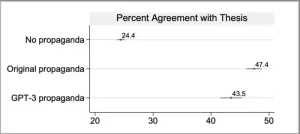(Press-News.org) OAK BROOK, Ill. – Annual breast cancer screening beginning at age 40 and continuing to at least age 79 results in the highest reduction in mortality with minimal risks, according to a new study published today in Radiology, a journal of the Radiological Society of North America (RSNA).
Breast cancer is the second most common cause of cancer death for women in the U.S. Despite research demonstrating that consistent participation in screening mammography can reduce breast cancer deaths by 40%, only 50% or less of eligible women actually participate in annual screening.
“There is an ongoing debate over the recommendations for breast cancer screening, specifically about when to start and the frequency of screening,” said lead researcher Debra L. Monticciolo, M.D., professor of radiology at Dartmouth Geisel School of Medicine in Hanover, New Hampshire.
Dr. Monticciolo said a recommendation by the U.S. Preventive Services Task Force (USPSTF) in 2009 to screen every other year, or biennially, beginning at age 50 resulted in a nationwide decline in screening participation. The USPSTF drafted new recommendations in 2023, suggesting women participate in biennial screening between 40 and 74. The American College of Radiology, the Society of Breast Imaging and the National Comprehensive Cancer Network recommend annual screening for women at average risk for breast cancer beginning at age 40 and continuing as long as the woman is in good health.
In the study, Dr. Monticciolo and colleagues performed a secondary analysis of Cancer Intervention and Surveillance Modeling Network (CISNET) 2023 median estimates of breast cancer screening outcomes. CISNET modeling data gives researchers the opportunity to estimate the outcomes of screening at various frequencies and starting ages using U.S. data.
The researchers compared the benefits of screening, including mortality reduction, life years gained, breast cancer deaths averted, and its risks—including benign, or unnecessary, biopsies and recall rates—for four different scenarios: biennial screening of women 50-74 (the longstanding USPSTF recommendation), biennial screening of women 40-74 (the task force’s new draft recommendation), annual screening 40-74, and annual screening 40-79. CISNET does not offer modeling past age 79.
The review of CISNET estimates showed that annual screening of women 40-79 with either digital mammography or tomosynthesis showed a mortality reduction of 41.7%. Biennial screening of women 50-74 and 40-74 showed mortality reduction of 25.4% and 30%, respectively. Annual screening of women 40-79 years showed the lowest per mammogram false-positive screens (6.5%) and benign biopsies (0.88%) compared to other screening scenarios.
“The biggest takeaway point of our study is that annual screening beginning at 40 and continuing to at least age 79 gives the highest mortality reduction, the most cancer deaths averted, and the most years of life gained,” Dr. Monticciolo said. “There’s a huge benefit to screening annually until at least 79 and even more benefit if women are screened past 79.”
Dr. Monticciolo said that although the USPSTF uses CISNET modeling to formulate its recommendations, it refers to recall rates and benign biopsies as harms, rather than risks.
“To balance the harms and benefits of screening mammography, they’re willing to give up some mortality benefit to avoid women being recalled for additional imaging and benign biopsies,” she said.
According to the researchers’ analyses, the chance of a woman having a benign biopsy following annual screening is less than 1%, and all recall rates for screening mammography are under 10%. When screening is performed annually with tomosynthesis, the recall rate decreases to 6.5%.
“The risks of screening are non-lethal and manageable for most women,” she said. “But advanced breast cancer is often lethal. Breast cancer is easier to treat if it’s found earlier; we’re able to spare women extra surgeries and chemotherapy. It’s just a better idea to shift to early detection, and that’s what screening does.”
Dr. Monticciolo said she hopes that her study will add to the body of literature that supports annual screening beginning at age 40 as the best way to diagnose cancer early.
“This paper is important because it shows once again that there’s a tremendous increase in mortality benefit by screening annually between the ages of 40-79, and that the chances of experiencing harm are low on a per-exam basis,” she said. “It comes down to valuing women’s lives. I am hoping that primary care physicians see that risks of screening are manageable, and the benefits are tremendous. We need to do this for women.”
###
“Outcomes of Breast Cancer Screening Strategies Based on Cancer Intervention and Surveillance Modeling Network Estimates.” Collaborating with Dr. Monticciolo were R. Edward Hendrick, Ph.D., and Mark A. Helvie, M.D.
Radiology is edited by Linda Moy, M.D., New York University, New York, N.Y., and owned and published by the Radiological Society of North America, Inc. (https://pubs.rsna.org/journal/radiology)
RSNA is an association of radiologists, radiation oncologists, medical physicists and related scientists promoting excellence in patient care and health care delivery through education, research and technologic innovation. The Society is based in Oak Brook, Illinois. (RSNA.org)
For patient-friendly information on breast cancer screening, visit RadiologyInfo.org.
END
Two New York University faculty have been awarded fellowships from the Alfred P. Sloan Foundation: SueYeon Chung, an assistant professor at the Center for Neural Science, and Jinyoung Park, an assistant professor at the Courant Institute for Mathematical Sciences.
The fellowships recognize “exceptional U.S. and Canadian researchers whose creativity, innovation, and research accomplishments make them stand out as the next generation of leaders,” the Sloan Foundation said in announcing this year’s ...
A recent study led by Assistant Professor Lindsay Jibb of the Lawrence Bloomberg Faculty of Nursing and Scientist at The Hospital for Sick Children (SickKids) found that parents of young children with cancer, along with pediatric cancer clinicians are in favour of an app-based solution that Jibb and her team are creating, to help parents manage their child’s cancer pain at home.
The study published in PLOS Digital Health showed that parents and clinicians not only found the pain management app to be helpful and safe, but also provided them with a sense of empowerment.
“The ...
BINGHAMTON, N.Y. -- The way companies announce new products or build up hype can often influence their success once those new products hit the market, according to new research from Binghamton University, State University of New York. Whether it's an upcoming blockbuster movie or a new rollout from major companies like Coca-Cola or Apple, the new research shows how companies might use this type of preannouncement marketing to their advantage.
How often have you watched trailers for an upcoming movie and thought, “I can’t wait to see that,” when it hits theaters ...
Our immune system is remarkably powerful. It quickly assembles teams of cells to eliminate threats inside our bodies. But sometimes, it hits the wrong target. Autoimmune diseases like lupus and multiple sclerosis result from friendly fire—immune cells attacking healthy tissues and organs by mistake. New treatments and therapeutic targets are direly needed for these conditions.
Now, Cold Spring Harbor Laboratory (CSHL) Professor Christopher Vakoc may have stumbled upon a new therapeutic target—one hidden in plain sight. Vakoc and his team discovered that IκBζ, a well-studied protein in the immunology ...
PITTSBURGH, Feb. 20, 2024 — Buprenorphine, a life-saving medication for opioid use disorder, is far less accessible in geographic areas of the United States with racially and ethnically diverse populations than in predominantly white areas, according to a new study of pre-pandemic data led by health policy scientists at the University of Pittsburgh School of Public Health published today in Journal of Addiction Medicine.
The study is among the first to examine buprenorphine access at the local, sub-county level, and the findings point to lack of access to medications for opioid use disorder as a potential ...
In an editorial, Sethuraman Panchanathan, director of the U.S. National Science Foundation (NSF), calls for the responsible and equitable development of artificial intelligence (AI) and promises to use the agency’s resources to work toward democratizing AI research. NSF spends $800 million on AI research in the public interest each year. Panchanathan summarizes some of the benefits AI can offer to scientific research—from accelerating discovery to automating routine tasks—but emphasizes that AI must be safe and accessible. Toward that end, NSF and its partners launched the National Artificial Intelligence Research Resource ...
Many animals, including apex predators, move in groups. We know this collective behavior is fundamental to the animal’s ability to move in complex environments, but less is known about what drives the behavior because many factors underlie its evolution. Scientists wonder, though, if all these animals share a fundamental drive such as for mating, safety, or perhaps even to save energy.
“The keyword is perhaps,” said Yangfan Zhang, postdoctoral researcher in the Department of Organismic and Evolutionary Biology (OEB) at Harvard, “because no one has actually measured this and compared it directly across all animal groups, mainly ...
One in three police homicides could have been avoided without endangering police or the public, according to a study. Eight percent of all homicides of adult men in the United States are committed by police. Using data from 2008–2017 from the National Officer-Involved Homicide Database, Josh Leung-Gagné compared police homicide rates across the 711 local police departments serving 50,000 or more residents in the United States. One explanation for differing rates of police killings is that some jurisdictions are riskier than others, which necessitates ...
Research participants who read propaganda generated by the AI large language model GPT-3 davinci were nearly as persuaded as those who read real propaganda from Iran or Russia, according to a study. Josh Goldstein and colleagues identified six articles, likely originating from Iranian or Russian state-aligned covert propaganda campaigns, according to investigative journalists or researchers. These articles made claims about US foreign relations, such as the false claim that Saudi Arabia committed to help fund the US-Mexico border wall or the false claim that the US fabricated reports showing that the Syrian government had used chemical weapons. For each ...
The recent approval of a CRISPR-Cas9 therapy for sickle cell disease demonstrates that gene editing tools can do a superb job knocking out genes to cure hereditary disease. But it's still not possible to insert whole genes into the human genome to substitute for defective or deleterious genes.
A new technique that employs a retrotransposon from birds to insert genes into the genome holds more promise for gene therapy, since it inserts genes into a "safe harbor" in the human genome where the insertion won't disrupt essential genes or lead to cancer.
Retrotransposons, or retroelements, are pieces of DNA that, when transcribed ...






